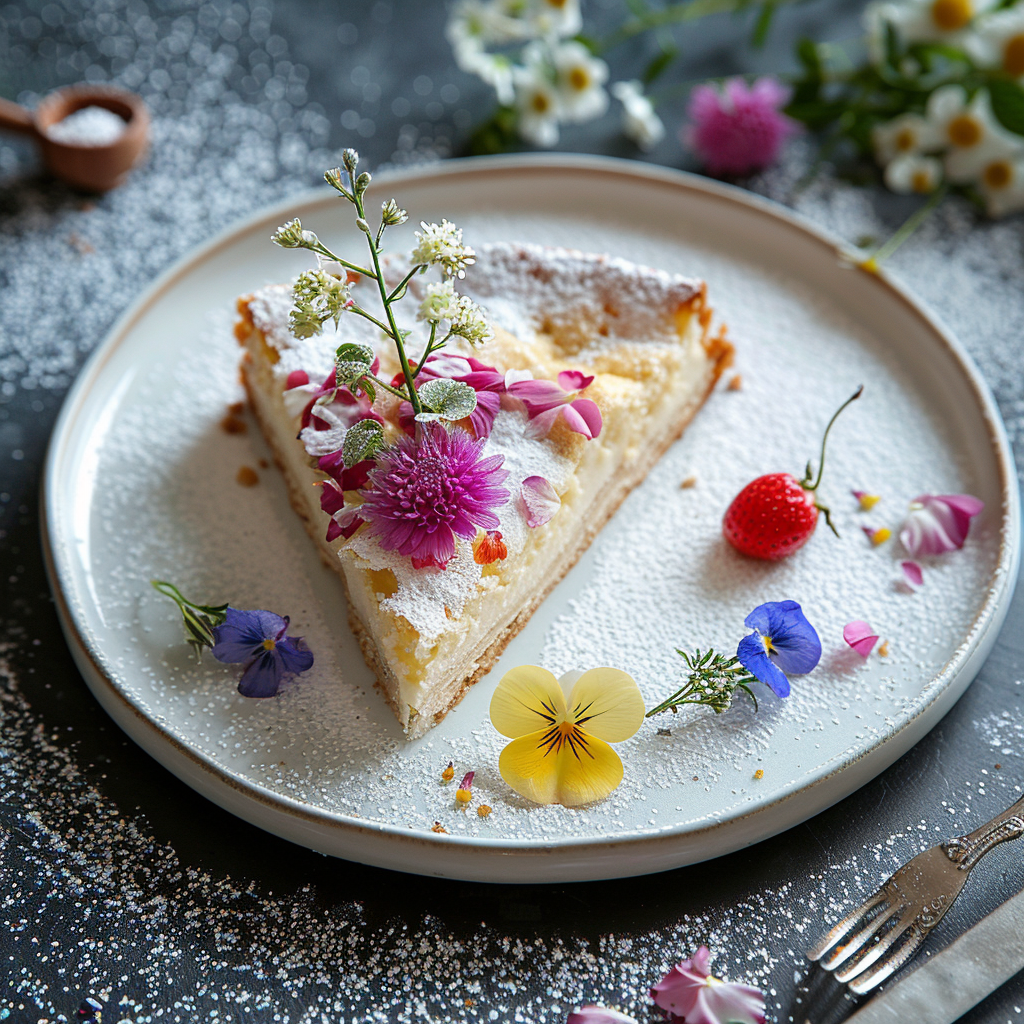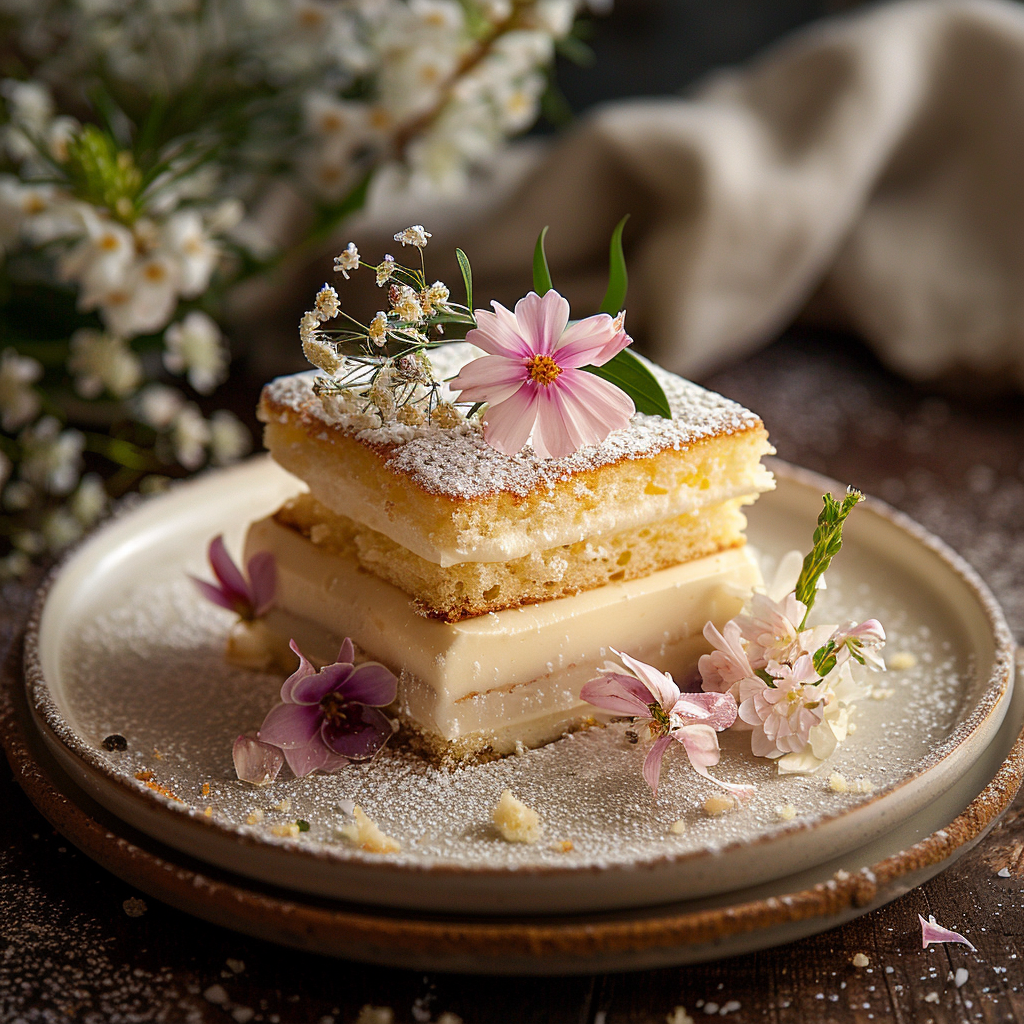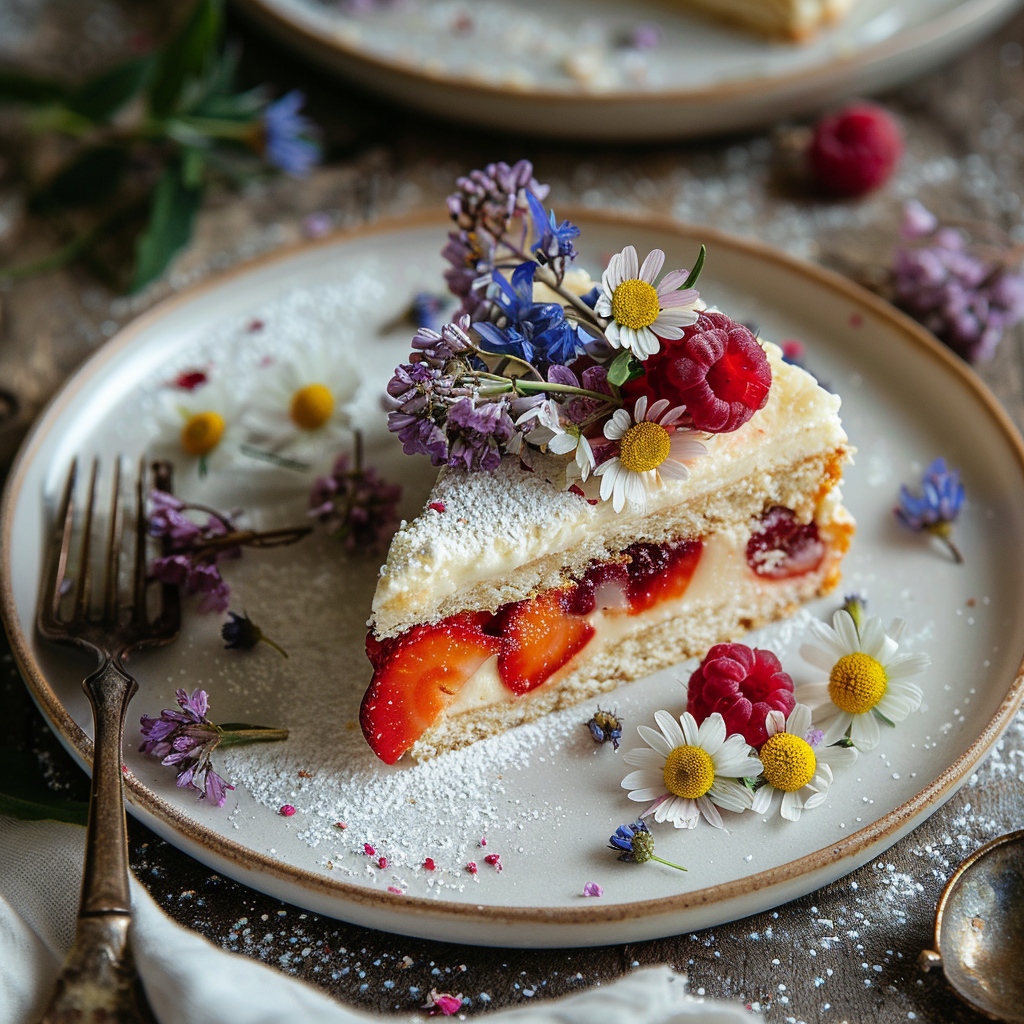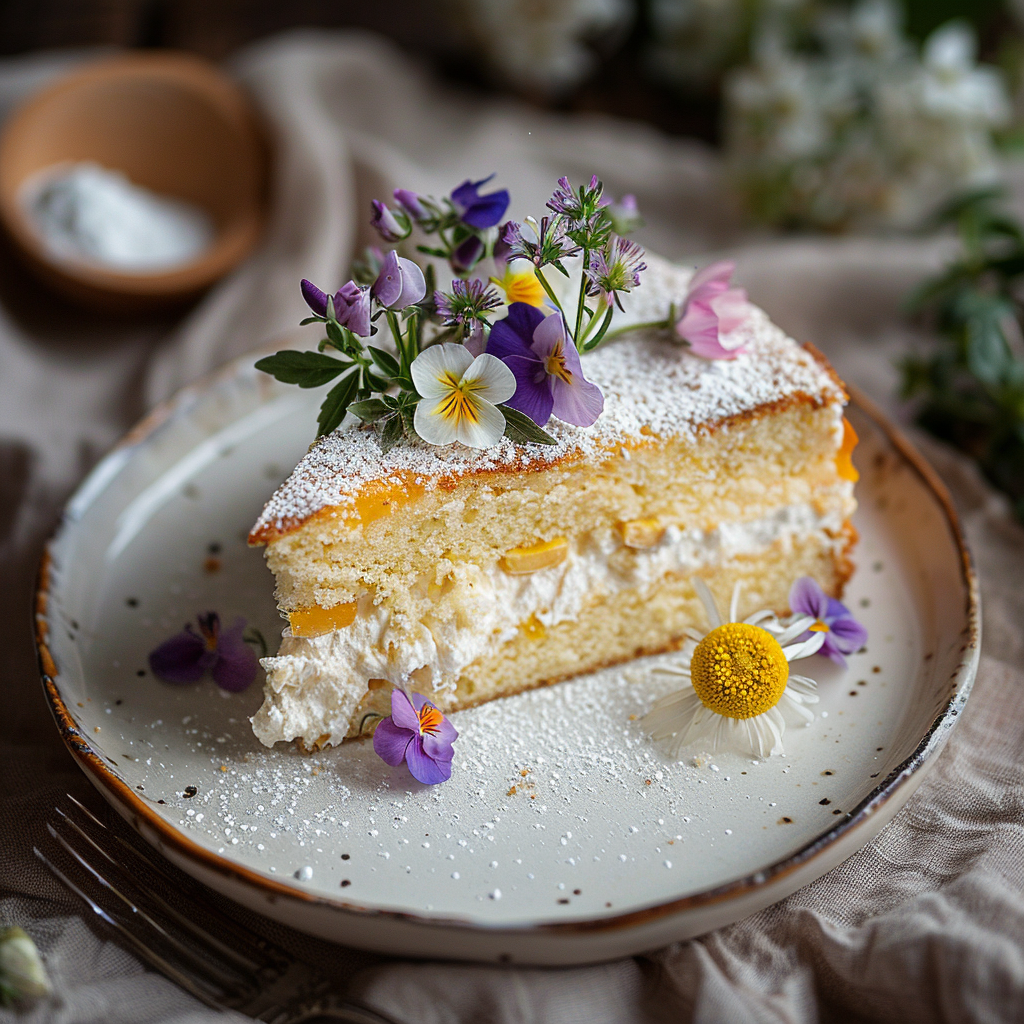Why You’ll Fall in Love with Floral Cake
There’s something magical about a cake that looks like it was plucked straight out of a garden. Last spring, I decided to try my hand at making a floral cake for my niece’s birthday. She loves all things pink and flowery, so I thought, why not? What started as a simple baking experiment turned into one of the most beautiful desserts I’ve ever made. The vibrant colors, the delicate petals, and the sweet aroma of buttercream made everyone at the party stop and stare. And guess what? It tasted even better than it looked!
The Sweet History Behind Floral Cakes
Floral cakes have been around for centuries, but their modern-day popularity skyrocketed thanks to social media. In many cultures, decorating cakes with flowers is a symbol of celebration and beauty. Traditionally, people used real edible flowers, but today, sugar flowers are the star of the show. They last longer, look stunning, and can be customized to match any theme. I remember seeing a Korean flower cake once—those intricate designs blew my mind! It inspired me to experiment with my own floral cake recipe.
Why You’ll Love This Recipe
This floral cake recipe is perfect for anyone who wants to create something special without spending hours in the kitchen. It’s not just about looks; the flavors are amazing too. Think light, fluffy sponge layers paired with creamy frosting that melts in your mouth. Plus, this recipe works for both beginners and seasoned bakers. Whether you’re making a pink floral cake or a birthday cake with flowers and butterflies, this guide will help you nail it every time.
Perfect Occasions to Bake a Floral Cake
Wondering what occasions are floral cakes good for? Honestly, they’re perfect for almost any celebration! From weddings to baby showers, birthdays to anniversaries, a floral wedding cake or a flower birthday cake design adds a touch of elegance. I’ve even seen them at gender reveal parties and Mother’s Day brunches. If you’re looking for cakes with flowers ideas, this is your go-to dessert.
Ingredients
- 2 cups all-purpose flour
- 1½ cups granulated sugar
- ¾ cup unsalted butter (softened)
- 3 large eggs
- 1 tablespoon vanilla extract
- 1 cup whole milk
- 2 teaspoons baking powder
- ½ teaspoon salt
- 4 cups buttercream frosting (store-bought or homemade)
- Food coloring gel (optional)
- Edible flowers or sugar flowers for decoration
Substitution Options
- Use almond extract instead of vanilla for a nutty twist.
- Swap whole milk with buttermilk for extra moistness.
- If you don’t have buttercream, cream cheese frosting works great too.
- Gluten-free flour can replace regular flour if needed.
Step 1: Preparing the Batter
Start by preheating your oven to 350°F (175°C). Grab a mixing bowl and cream the softened butter with the sugar until it’s light and fluffy. Crack in the eggs one at a time, mixing well after each addition. Add the vanilla extract for that warm, comforting scent. Slowly mix in the flour, baking powder, and salt alternately with the milk. The batter should be smooth and pourable, like sunshine in a bowl.
Pro tip: Don’t overmix the batter—it can make your cake dense instead of airy.
Step 2: Baking the Cake Layers
Pour the batter evenly into three round cake pans lined with parchment paper. Pop them in the oven and bake for 25–30 minutes. You’ll know they’re done when a toothpick comes out clean. As the cakes bake, your kitchen will fill with the most heavenly aroma. Once baked, let the layers cool completely on a wire rack before frosting.
Chef’s tip: For flat layers, tap the pans gently on the counter before baking to release air bubbles.
Step 3: Decorating with Flowers
Time to get creative! Spread a generous layer of buttercream between the cooled cake layers, then cover the entire cake with a thin crumb coat. Chill it for 15 minutes to set. Now comes the fun part—decorating! Tint some frosting with food coloring gels to match your theme. Use piping bags and tips to create petals, leaves, and swirls. Top it off with edible flowers or sugar flowers for a wow factor.
Pro tip: Practice your piping skills on a plate first if you’re new to decorating.
Timing
| Task | Time |
|---|---|
| Preparation | 20 minutes |
| Baking | 30 minutes |
| Cooling | 45 minutes |
| Decorating | 60 minutes |
| Total Time | 2 hours 35 minutes |
Chef’s Secret
To keep your cake with flowers on top fresh, mist the sugar flowers lightly with water before placing them. This prevents them from drying out during storage.
Extra Info
Did you know that marzipan roses were once a status symbol in Victorian England? Only wealthy families could afford such elaborate decorations. Today, we can recreate that luxury with affordable tools and techniques!
Necessary Equipment
- Stand mixer or hand mixer
- Round cake pans (8-inch)
- Piping bags and tips
- Offset spatula
- Wire cooling rack
Storage Tips
Store your floral birthday cake in an airtight container at room temperature for up to two days. Avoid direct sunlight to prevent the colors from fading. For longer storage, refrigerate the cake for up to five days. Bring it back to room temperature before serving for the best texture and flavor.
If you live in a humid area, consider freezing the cake. Wrap it tightly in plastic wrap and aluminum foil to avoid freezer burn. Thaw it overnight in the fridge before enjoying.
Always handle the cake gently to preserve its delicate decorations. A small dent can ruin the overall effect, so take your time!
Tips and Advice
- Invest in quality food coloring gels—they give brighter, more vibrant hues.
- Use a turntable while frosting for smoother results.
- Plan your design ahead of time to save time during assembly.
Presentation Ideas
- Add metallic accents using edible gold leaf.
- Pair the cake with fresh greenery for a rustic vibe.
- Create a monochromatic theme using shades of pink or lavender.
- Top it with candles shaped like butterflies for added charm.
Healthier Alternatives
Want to enjoy your simple floral cakes guilt-free? Here are six variations:
- Gluten-Free Option: Swap regular flour with almond or oat flour.
- Low-Sugar Version: Use monk fruit sweetener instead of granulated sugar.
- Vegan Delight: Replace eggs with flaxseed meal and butter with coconut oil.
- Protein-Packed Cake: Add Greek yogurt to the batter for extra protein.
- Fruit-Infused Layers: Mix pureed berries into the batter for natural sweetness.
- Dairy-Free Frosting: Opt for dairy-free cream cheese or whipped coconut cream.
Mistake 1: Overloading the Cake with Frosting
One common mistake is piling on too much frosting, which can overpower the cake’s delicate flavors. To avoid this, apply a thin crumb coat first, then add decorative details sparingly. Balance is key!
Mistake 2: Rushing the Cooling Process
Impatience can lead to disaster. If you frost a warm cake, the frosting will melt and slide off. Always let the layers cool completely before assembling.
Mistake 3: Using Real Flowers Without Checking Safety
Not all flowers are edible. Before adding real blooms, ensure they’re pesticide-free and safe for consumption. Stick to trusted suppliers or use sugar flowers instead.
FAQs
What occasions are floral cakes good for?
Floral cakes are versatile and work beautifully for weddings, birthdays, baby showers, and anniversaries. Their elegant designs make them ideal for formal events, while playful themes suit casual gatherings.
What is Korean flower cake?
A Korean flower cake features intricate, lifelike sugar flowers crafted to resemble real blooms. These cakes often combine traditional Asian aesthetics with modern techniques, resulting in breathtaking designs.
What is the best frosting for floral cakes?
Buttercream is the top choice due to its smooth texture and ability to hold shapes. Swiss meringue buttercream offers a lighter option, while cream cheese frosting adds tangy richness.
Are floral cakes hard to make?
Not at all! With practice and patience, anyone can master floral cake decorating. Start simple and gradually build your skills. Even basic designs look impressive.
Can I use fondant for floral cakes?
Absolutely! Fondant provides a clean canvas for detailed work. Roll it thinly and cut out petal shapes for stunning effects.
How do I color my frosting?
Use gel-based food coloring for intense shades. Start with a small amount and adjust until you achieve the desired hue.
Where can I buy edible flowers?
Check specialty grocery stores, farmers’ markets, or online retailers. Always verify that the flowers are safe to eat.
Can I freeze floral cakes?
Yes, freeze undecorated cakes wrapped tightly. Decorate after thawing for the freshest look.
What tools do I need for piping?
Essential tools include piping bags, various tips (like petal and leaf tips), and a turntable for easy access.
How far in advance can I prepare the cake?
Bake the layers up to two days ahead and store them wrapped in plastic. Decorate no more than one day prior to serving.
Final Thoughts
Making a floral cake is more than just baking—it’s an art form. From the first whisk of the batter to the final placement of a sugar flower, every step brings joy and creativity. Whether you’re crafting a pink floral cake or designing cakes with flowers and butterflies, remember to have fun and embrace imperfections. After all, the best part of any cake is sharing it with loved ones. So grab your apron, roll up your sleeves, and let’s create something beautiful together!

Equipment
- Stand mixer or hand mixer
- Round cake pans (8-inch)
- Piping bags and tips
- Offset spatula
- Wire cooling rack
Ingredients
- 2 cups all-purpose flour
- 1.5 cups granulated sugar
- 0.75 cups unsalted butter (softened)
- 3 large eggs
- 1 tablespoon vanilla extract
- 1 cup whole milk
- 2 teaspoons baking powder
- 0.5 teaspoon salt
- 4 cups buttercream frosting store-bought or homemade
- food coloring gel (optional)
- edible flowers or sugar flowers for decoration
Instructions
- Preheat your oven to 350°F (175°C).
- Cream the softened butter with the sugar until light and fluffy.
- Add eggs one at a time, mixing well after each addition.
- Mix in the vanilla extract.
- Alternately mix in flour, baking powder, and salt with the milk until smooth.
- Pour the batter into three round cake pans lined with parchment paper.
- Bake for 25–30 minutes, or until a toothpick comes out clean.
- Let the layers cool completely on a wire rack.
- Spread buttercream between the cooled layers and apply a thin crumb coat.
- Chill the cake for 15 minutes to set the crumb coat.
- Decorate using tinted frosting and top with edible or sugar flowers.



